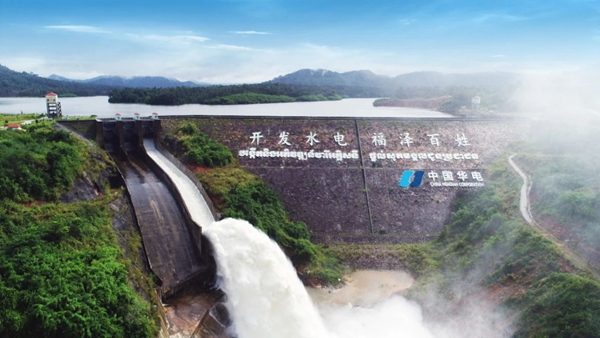As a key country along the 21st Century Maritime Silk Road and one of the earliest and most active participants in the Belt and Road Initiative (BRI), Cambodia has long been an ally of China and a vital arena for Chinese power enterprises.
Over the past 15 years, China Huadian Corporation Ltd. (CHD) has remained deeply committed to the development of Cambodia's energy sector, from the groundbreaking of the lower Stung Russei Chrum hydropower station in 2010, to the commissioning of the Sihanoukville Coal Power Plant in 2022, and the establishment of its ASEAN Headquarters in 2024. Through these efforts, CHD has delivered green, low-carbon, and reliable electricity that fuels Cambodia's rapid economic growth.
Driving infrastructure connectivity through investment
In November 2022, CHD's Sihanoukville Coal Power Plant began operations with the successful testing of its first unit. As Cambodia's largest, most advanced, and environmentally friendly coal-fired power project, it features two 350,000-kilowatt supercritical generating units, along with a dedicated 8,000-ton coal terminal and a 2,000-ton heavy cargo berth. The first unit was completed and commissioned in just 26 months, earning praise as a model of Chinese efficiency in overseas energy construction.

A view of the Sihanoukville Coal Power Plant [Photo/sasac.gov.cn]
By the end of 2024, CHD had invested a cumulative $1.85 billion in Cambodia, creating a diversified development portfolio of hydropower and thermal power projects. This investment has not only strengthened national power connectivity but also stimulated upstream and downstream industrial growth.
In recognition of its outstanding contributions to environmental protection, CHD's Sihanoukville subsidiary received the "Outstanding Contribution to Environmental Protection Award" from Cambodia's Ministry of Environment in March.
Promoting green development through clean energy solutions
Guided by a commitment to green development, CHD is advancing high-standard, sustainable, and people-centered energy projects to help build a China-Cambodia community with a shared future.
In 2024, CHD Cambodia Sustainable Development Report was published, which is the first country-specific corporate social responsibility (CSR) report released by a Chinese power enterprise.
Located on the Stung Russei Chrum River in Cambodia's Koh Kong Province, the Lower Stung Russei Chrum Hydropower Station — the second-largest in Cambodia — has delivered a continuous supply of clean electricity since its commissioning.

A view of the Lower Stung Russei Chrum Hydropower Station [Photo/sasac.gov.cn]
As CHD's first overseas Build-Operate-Transfer (BOT) hydropower project, the plant has an installed capacity of 338,000 kW and an annual output of approximately 1 billion kilowatt-hours, significantly alleviating the country's electricity shortage.
By the end of 2024, the station had maintained safe operations for over 4,000 consecutive days, delivering more than 11 billion kWh of green energy and accounting for 40 percent of Cambodia's total electricity generation.
Strengthening people-to-people bonds through cultural and social engagement
Beyond energy generation, CHD is committed to fulfilling its social responsibilities and promoting cross-cultural exchange in Cambodia.
In 2024, CHD launched a global CSR initiative, with Cambodia as the first destination. The program includes a mobile digital library with educational resources in science, arts and literature, as well as a children's drawing competition on the theme "Future Energy" to promote awareness of clean energy and sustainability through art.
CHD also supports local development by building essential infrastructure, including 45 kilometers of roads, three bridges, and power transmission lines connecting the hydropower station to Koh Kong.
Prioritizing local employment and skills development, CHD established dedicated training programs combining theoretical learning with practical experience. Presently, local employees account for 60 percent of the workforce at the Lower Stung Russei Chrum Hydropower Station.
(Executive editor: Yuan Ting)